Day 1:
Arrive in Lima and transfer to our hotel in Lima.
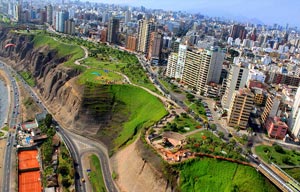
Arrive in Lima and transfer to our hotel in Lima.

Morning flight to Tumbes. On arrival in Tumbes (just south of the Ecuadorian border) we’ll transfer to the comfortable Costa del Sol hotel and after an early lunch head out into the mangrove thickets in Tumbes Mangrove Reserved Zone. From a local boat we’ll enter narrow channels in search of Masked Water Tyrant, Rufous-necked Wood-Rail, Clapper Rail, White Ibis and Mangrove Warbler. We’ll see many shorebirds and inshore seabirds here as well and there is also a chance of two species of Whistling Duck. Herons include: Yellow-crowned and Black-crowned Night-Herons, Little-Blue, White-necked and Tricolored Heron, plus a recently discovered population of Bare-throated Tiger-Heron. Mangrove Black Hawk is also a possibility. In the late afternoon we’ll bird in the desert scrub along the road. Species we expect here include: Pacific Parrotlet, Scarlet-backed Woodpecker, Necklaced Spinetail, Superciliaried Wren, Collared Antshrike, Baird’s Flycatcher, Tawny-crowned Pygmy-tyrant, Pearl Kite, Tumbezian Tyrannulet Tumbes Sparrow and Cinereous Finch. Night at Hotel Costa del Sol. (B,L,D)
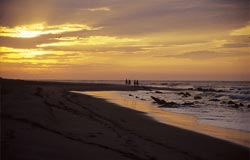
We’ll get an early start to-day so as to be in prime habitat at dawn. We drive east down rutted, dusty roads in four wheel drive jeeps to El Mirador for a dawn breakfast as the birds start to sing. We’ll walk a track with no traffic looking for birds of the drier forest amidst some of the most fantastic bombax forest on earth. Giant green barked, pot bellied trees hanging with spanish moss provide a home for One-colored and Slaty Becards, Tumbes Peewee, White-headed Brush-Finch, Plumbeous-backed Thrush, Ecuadorian Ground Dove, Tumbes Swift, Saffron Siskin, Red-masked Parakeet and many other commoner widely distributed species. In the pm we’ll leave our vehicle and walk slowly a two kilometer stretch of trail where we have had luck with Black-capped Sparrow, Henna-hooded Foliage-gleaner and Scrub Antpitta. We’ll arrive at Quebrada El Faical at dusk. Here is a park ranger station with dining and bathroom facilities but we’ll use the station as a safari camp style base. (B,L,D)
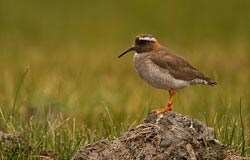
Over the next two days we’ll bird the area between Quebrada Faical and Pozo del Pato and the slopes of Cerro San Miguel - the highest, wettest and greenest part of Tumbes. Here in the Tumbes Reserved Zone, mile upon mile of prime dry deciduous forest stretches as far as the eye can see. The Ecuadorian border is a stone’s throw away, but unfortunately on that side of the border there is little, or no forest left. Here on the Peruvian side, Ocelots and Mantled Howler Monkeys survive unmolested, as does the very interesting Tumbesian avifauna. Birds we hope to see over the next two days, and that we have seen here in the past include : Pale-browed Tinamou, Gray-backed Hawk, Black-hawk Eagle, Rufous-headed Chachalaca, Crested Guan, Ochre-bellied Dove and Pallid Doves, Gray-cheeked Parakeet, Bronze-winged Parrot, West Peruvian Screech-owl, Green-breasted Mango, Ecuadorian Piculet, Red-rumped Woodpecker, Guayaquil Woodpecker, Blackish-headed Spinetail, Slaty Spinetail, Henna-hooded and Rufous-necked Foliage-gleaner, Chapman’s Antshrike, Gray-headed Antbird, Scrub Antpitta, Pacific Elaenia, Rufous-winged Tyrranulet, Ochraceous Attila, Pacific Royal Flycatcher, Black-tailed Fycatcher, Ecuadorian Thrush, White-vented Plumleteer, Green-crowned Woodnymph, Violet-bellied Hummingbird, Gray-breasted Flycatcher, Pacific Fire-eye, Lesser Greenlet, Yellow-tailed and White-edged Orioles. On the afternoon of the second day we’ll return to Tumbes Tumbes thru drier deciduous forest, looking especially for Saffron Siskin and Becards, planning to arrive in Tumbes at dusk. First night at the park ranger station, second night at the Hotel Costa del Sol. (B,L,D)
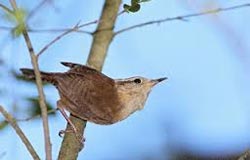
We’ll dive south to Los Organos and take a mini-pelagic off the coast. This is just north of Cabo Blanco made famous by Ernest Hemmingway, where the cold waters of the Humboldt current meet the warm waters of the northern Pacific so depending on the year both cold and warm water species are to be expected. Possibilities include Black, Galapagos, Elliot’s, White-faced, Ringed, Markhams and Least Storm Petrels, Waved Albatross, Parkinson’s Petrel and Boobies. We’ll return to shore for lunch In the beach resort of Mancora and head back to our hotel with birding stops along the way. (B,L,D)
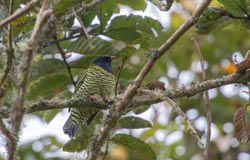
Flight from Tumbes to Lima (or drive to Chiclayo if taking the Maranon North Peru tour) International flights home or overnight at our hotel close to the airport or join our Iquitos tour. (B,L,D)
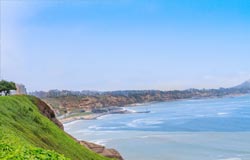
2019 Prices per person in US$:
Prices are available upon request.